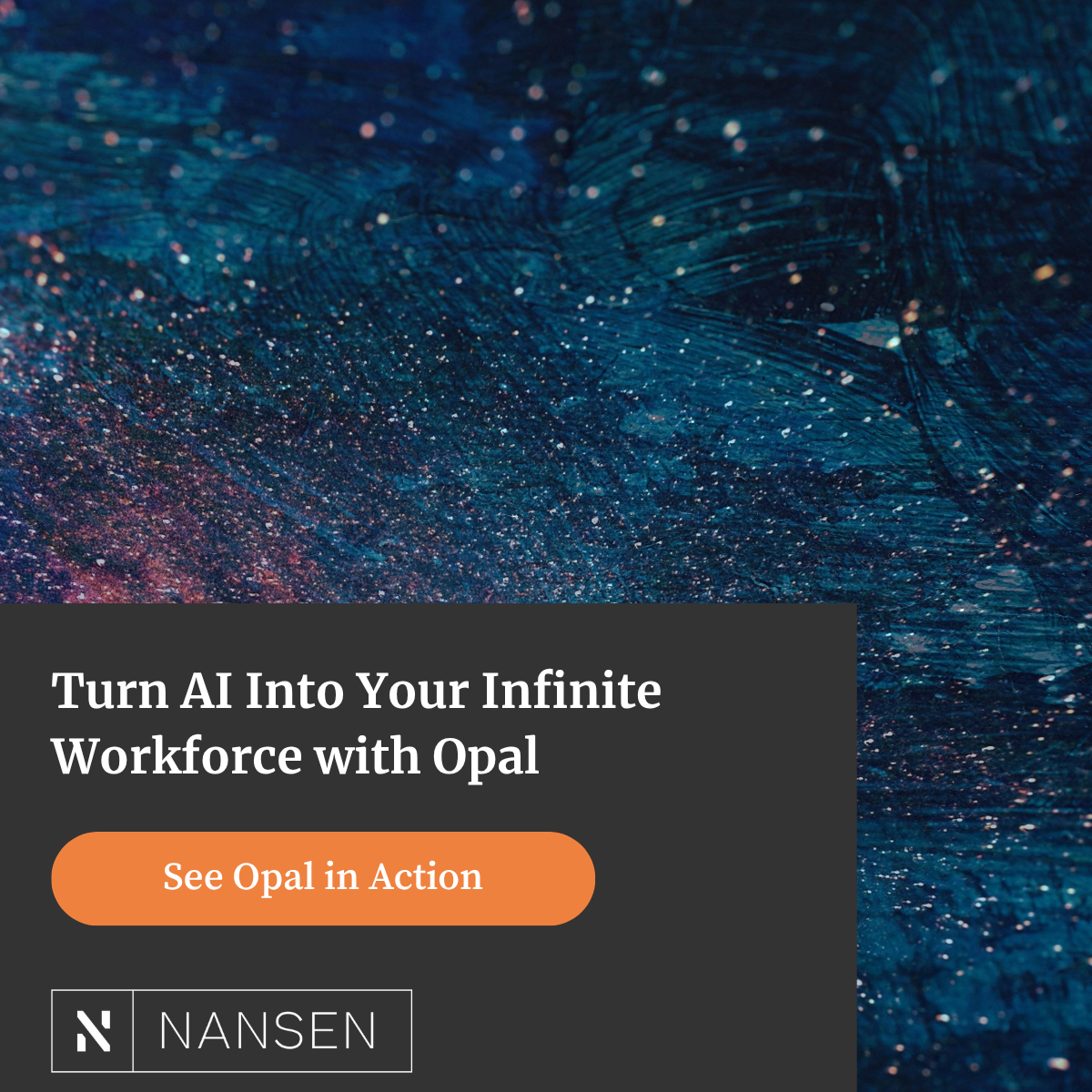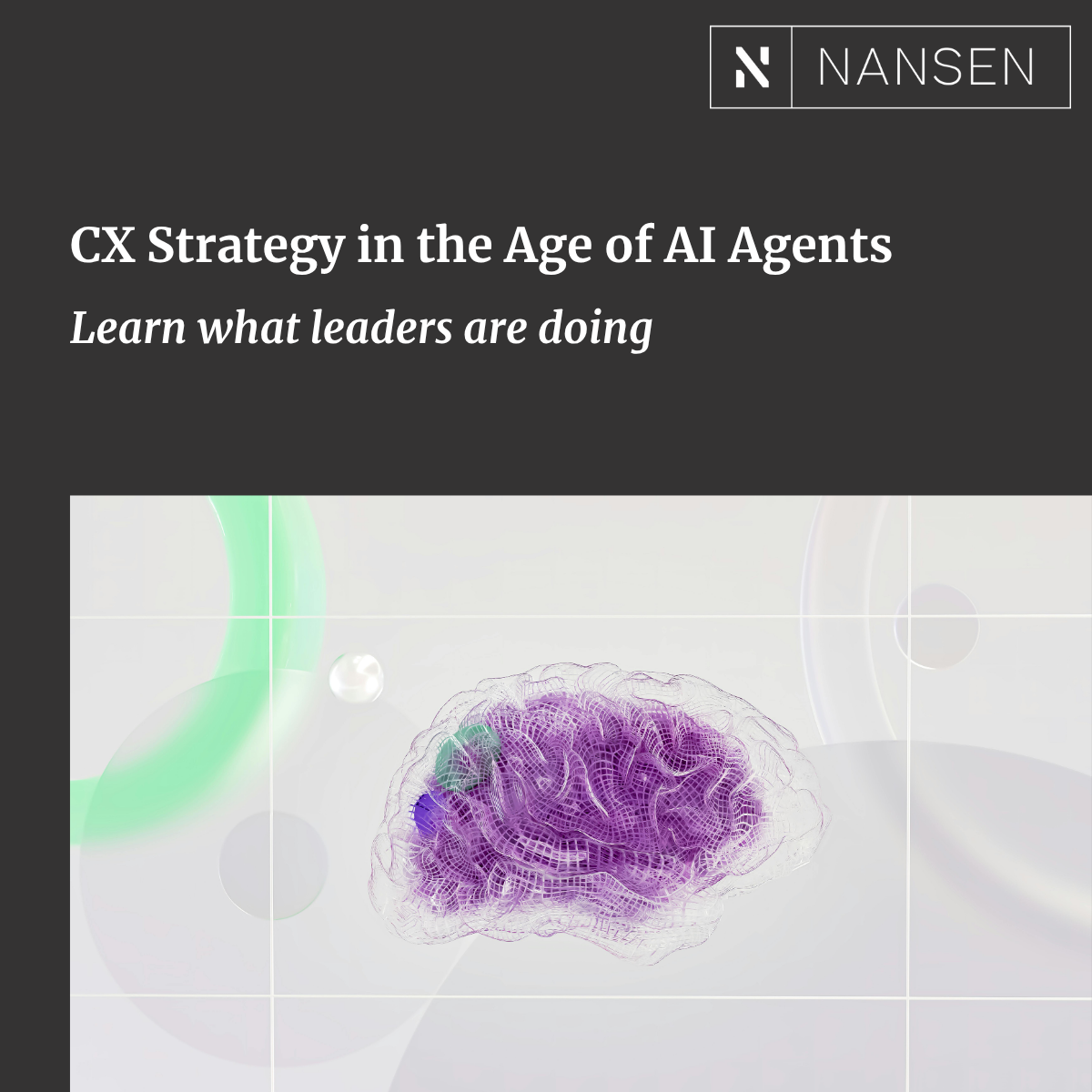Joe Grause has worn many hats in his career in digital technology. From his very first role to today as a co-CEO and co-owner of Nansen, Joe’s had his finger on the pulse of ecommerce and the platforms that make online shopping so engaging. Read on to hear directly from Joe how Nansen became the agency it is today, and where the team is headed next.
What's your career background? How did it lead you to Nansen?
I started my career in IT consulting. After college, I didn't know exactly what I wanted to do, but I ended up getting a job at a consulting firm in the D.C. area. That led me to meet some people at a company called Mediachase, which was an ecommerce software platform. It was a relatively small company and I was there for about six years, so I worked across business development, sales, project management, a whole bunch of different stuff.
Then Mediachase was acquired by Episerver, which is now Optimizely. During my two years at Episerver, I got to know some of the people at Nansen, and when I left that role, Nansen seemed like a perfect fit. I joined in 2013 and I’ve been here ever since.
What was your first role at Nansen and how did you end up becoming a partner?
I started in the account management department, overseeing a handful of important accounts. Eventually, I took on more of the overarching business development and sales responsibilities, working closely with some of the senior leadership and owners at the time.
Nansen was an independent agency for a while, but we were eventually acquired by NoA, the North Alliance group, and we rebranded as Making Waves. During the acquisition, I was offered the role of partner and accepted. Then, about two and a half years ago, Markus, Arnold, and I had the opportunity to buy the company back from NoA and relaunch the Nansen brand. So we decided to take that on, and can carry the business forward as an independent agency again.
What would you say is unique about the culture at Nansen?
Certainly, other companies talk about having a good culture and lots of benefits—free lunches and happy hours and stuff like that—but I think culture extends beyond that. And at Nansen, our team is just around 20 people, and a lot of those people have been with us since the very beginning. So there’s just something about the way that we treat each other and the way that we respect and appreciate each other that feels different from other places I've worked. We have each other’s backs and we’re there for each other.
We also have really strong relationships with a lot of our clients, on a personal level. So we're not just working “for the man.” Nansen creates this environment where people are doing the work because they actually enjoy it. They're in an industry they like; they enjoy the people they're working with; and in most cases they also enjoy the teams they're doing the work for.
Thinking about digital technology and digital media at large, are there particular trends that you’re following closely?
It's been interesting to see both evolution and then emergence of technologies in the content management and ecommerce space. Like I said, I came from Mediachase, which was an ecommerce platform company, then I was at Episerver for a while in the very early days. And at that time, it took a lot of work to convince people to put their credit card number in a box on a website somewhere. Now, obviously, that's very commonplace. So watching the growth of platforms like Episerver and how important they've become to businesses is fascinating.
And now, Optimizely and other companies like Sitecore and Adobe are pitching themselves as one-stop-shops for everything marketing- and ecommerce- and web-related, these behemoth platforms that try to offer every feature capability under the sun. I'll be curious to see how well that plays out. Because at the same time, we've seen the emergence of platforms like Contentful and Contentstack and BigCommerce, where the focus is more on microservices and best-of-breed solutions and platforms.
What are some recent Nansen projects that you're particularly proud of?
Two come to mind, and they’re very different.
One is our work with a long term client, a pet-food brand. I think that all of Nansen, and me personally, are super proud of the fact that our work with them started as a pretty standard website rebuild and re-platform project, eight or nine years ago, and today we're still working with them. And the fact that now we play a much bigger role, basically as an extension of their team, speaks to the trusted relationships that we build with clients and the quality of work that we deliver.
The other project I’m proud of is with the U.S. Polo Association. They were just in our office for an annual get together, to check in and plan for the future. We've also been working with this client for more than three years, and you can just tell in meetings like that one that we are their trusted advisor on anything digital, web, and app related. On a number of occasions during the meeting, they essentially said, ‘you guys just tell us what to do, and we'll go with your recommendation.’
It's so nice and refreshing to have those types of projects and client relationships.
Nansen has a policy where employees can spend four hours a week working on a side project. What led you and the team to implement this idea?
About two years ago, we had been taking in some feedback from the team that people were feeling a little overworked, or that there was too much focus on billable hours. So Nansen management and leadership started looking at what other companies do to foster creativity and innovation and keep people motivated and excited.
Google and Atlassian were obviously very notable, big examples. But other companies out there also made a point to provide free time for people to focus on their own personal projects or on competency development—just some time to basically take a break from, in our case, the client work, and focus on something else.
The spirit of it is that it can certainly be work related. But we want our team to be able to give their brains a rest, or focus on something that they’re passionate about. Then they can also share out to the rest of the team, so that it provides inspiration for everybody else as well.
Have any of the side projects stuck in your mind as particularly cool or interesting?
Well, this one is work-related, but… The bane of everybody's existence is time tracking and having to bill hours to projects and clients. So someone on the team built an app that made it easier to track time and enter it directly into our system.
There have been lots of people who have done training, where they've gone off and studied a particular topic or new technology and then shared how it could be used in a client project. So there's been quite a few different ones in that area that are cool.
Outside of work, what do you like to do?
I've got two kids at home, eight and five, so a lot of my time is spent having fun with them and taking them to their different activities and school. My wife and I and our family, we do like to travel so we plan a few trips a year around the states.
I also like to try and play some golf when I can. Obviously, the time for that in Chicago is relatively brief, so I’ve got to focus and get it in while I can in the summer!
What excites you about the future of Nansen?
What excites me is the opportunity to grow and build something of our own and control our own destiny. We had a little bit of that feeling in the early days at Nansen but, at least for me personally, I wasn't an owner or partner at the time, so it's a different feeling now.
We've got a fantastic core team and, in my opinion, the exciting part is to see if we can really step on the gas over the next couple of years and grow the team. It would be awesome to have a few more people, whether that winds up being 20 or 30 or 50, in the next couple years. And to be able to do that on our own, through building the right partnerships and finding the right people—to really make Nansen into something bigger than it is today, that still maintains our culture and hopefully with a lot of the same people that are with us today—that’s one of our primary goals.













